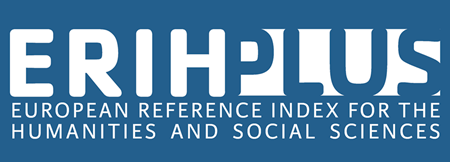THE SPATIAL CONCEPT ‘UP’ AS A SOURCE OF METAPHOR IN THE ENGLISH-SPEAKING WORLDVIEW
DOI:
https://doi.org/10.32782/folium/2025.7.3Keywords:
worldview, cognitive metaphor, orientational metaphor, concept, metaphorical transfer, associative link.Abstract
The article is devoted to the analysis of the spatial concept ‘up’ as a key source of metaphorical conceptualization in the English-speaking worldview. The study is based on the principles of cognitive linguistics, particularly the conceptual metaphor theory developed by G. Lakoff and M. Johnson. The relevance of this research stems from the anthropocentric orientation of modern philological studies and the importance of examining the interrelations between language, thinking, and culture. Spatial thinking is one of the fundamental cognitive abilities of humans and thus plays a leading role in the conceptualization of the world. Language, as a mirror of consciousness, reflects certain spatial concepts and transforms them into powerful tools for generating new meanings. The study clarifies how the simple physical notion of ‘up’ is transformed into complex, abstract concepts that constitute a significant part of the mental lexicon of English speakers. The mechanisms of metaphorical transfer are detailed, illustrating how knowledge is transported from the source domain (space) to the target domain (emotions, states, social status, etc.). The results of the study confirmed the hypothesis that the spatial concept ‘up’ has a dual nature and plays a key role in the conceptualization of both positive (control, success, progress, health) and negative (loss of control, financial hardship, malicious intent, imprisonment) abstract notions. This ambivalence is explained by the fact that human experience is not exclusively positive or negative, but filled with both opportunities and potential threats – systematically reflected in language. The research emphasizes the connection between spatial orientation and worldview, demonstrating how basic notions (such as ‘up’) may have contradictory meanings, mirroring the complexity of human existence and its representation in linguistic structures.
References
Андрєєва, І.О. (2016). Лінгвокогнітивні параметри дискурсивної узуалізації англомовних локативних фразеологізмів. Нова філологія, 68, 6–11.
Веремчук, Е.О. (2017). Лексико-семантичне поле Space / Космос в англійській мові: лінгвокогнітивний та лінгвосинергетичний аспекти : дис. … канд. філол. наук : 10.02.04. Запоріжжя. 253 с.
Козлова, Т.О. (2016). Spacial Deixis as Language Universal. Науковий вісник Дрогобицького державного педагогічного університету імені Івана Франка. Серія «Філологічні науки (мовознавство)», 6, 73–79.
Cian, L. (2017). Verticality and Conceptual Metaphors: A Systematic Review. Journal of the Association for Consumer Research, Vol. 2, 444–459. DOI:10.1086/694082.
Kövecses, Z. (2020). Extended Conceptual Metaphor Theory. Cambridge : Cambridge University Press. 206 p. DOI:10.6035/CLR.2021.25.18.
Lakoff, G., & Johnson, M. (2003). Metaphors We Live By. New York : University of Chicago Press. 277 p.
Langacker, R. (2012). Linguistic manifestations of the space-time (dis)analogy. Space and Time in Languages and Cultures: Language, Culture, and Cognition / ed. by L. Filipovic. Amsterdam : John Benjamins Publishing. P. 191–217.
Lynott, D., & Coventry, K. (2014). On the ups and downs of emotion: testing between conceptualmetaphor and polarity accounts of emotional valence-spatial location interactions. Psychon. Bull. Rev., Vol. 21, 218–226.
Pitt, B., & Casasanto, D. (2022). Spatial Metaphors and the Design of Everyday Things. Frontiers in Psychology, Vol. 13, 1–12. DOI:
3389/fpsyg.2022.1019957.
Sidiropoulou, M., & Hoidas, S. (2014). Metaphorical conceptualizations of vertical and horizontal space in English press articles and
their Greek translations. Across Languages and Cultures, Vol. 15, no. 2, 177–197.












